PVH (NYSE:PVH) Beats Q4 Sales Targets, Stock Jumps 11.1%

Fashion conglomerate PVH (NYSE:PVH) beat Wall Street’s revenue expectations in Q4 CY2024, but sales fell by 4.8% year on year to $2.37 billion. Its non-GAAP profit of $3.27 per share was 1.8% above analysts’ consensus estimates.
Is now the time to buy PVH? Find out in our full research report .
PVH (PVH) Q4 CY2024 Highlights:
Stefan Larsson, Chief Executive Officer, commented, “Driven by the strength of our two iconic global brands, Calvin Klein and TOMMY HILFIGER, and our disciplined execution of our PVH+ Plan, we finished the year strong and are well-positioned for 2025. In 2024, we beat our EPS guidance on a non-GAAP basis and delivered better-than-expected revenue in constant currency, with record gross margins and double-digit non-GAAP EBIT margin. In a challenging macro, we delivered another year of strong profitability in North America, drove sequential improvements in our wholesale order books in Europe while improving our quality of sales, and we achieved our third consecutive year of growth in Asia Pacific, on a constant currency basis.”
Company Overview
Founded in 1881 by a husband and wife duo, PVH (NYSE:PVH) is a global fashion conglomerate with iconic brands like Calvin Klein and Tommy Hilfiger.
Apparel and Accessories
Thanks to social media and the internet, not only are styles changing more frequently today than in decades past but also consumers are shifting the way they buy their goods, favoring omnichannel and e-commerce experiences. Some apparel and accessories companies have made concerted efforts to adapt while those who are slower to move may fall behind.
Sales Growth
A company’s long-term sales performance is one signal of its overall quality. Any business can put up a good quarter or two, but many enduring ones grow for years. Over the last five years, PVH’s demand was weak and its revenue declined by 2.7% per year. This was below our standards and is a sign of poor business quality.
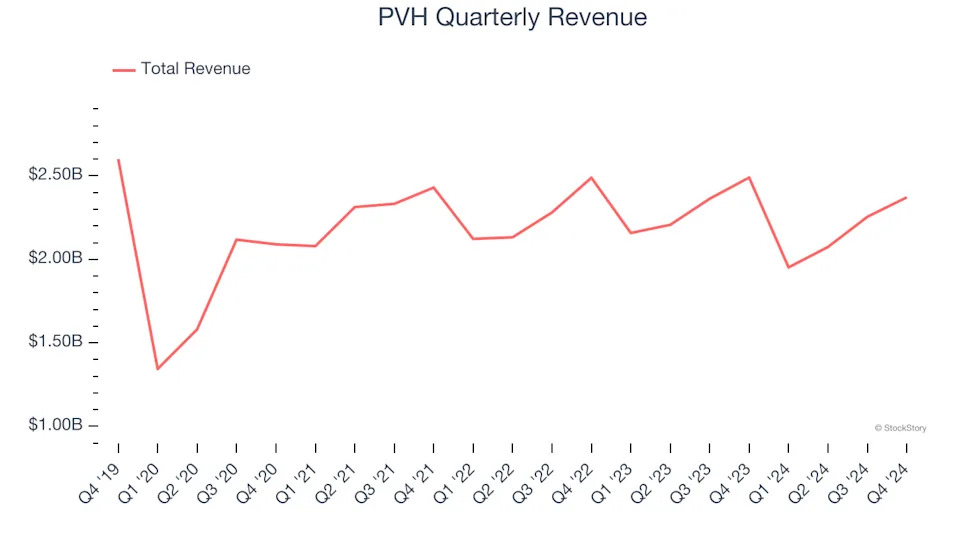
We at StockStory place the most emphasis on long-term growth, but within consumer discretionary, a stretched historical view may miss a company riding a successful new product or trend. PVH’s annualized revenue declines of 2.1% over the last two years align with its five-year trend, suggesting its demand has consistently shrunk.
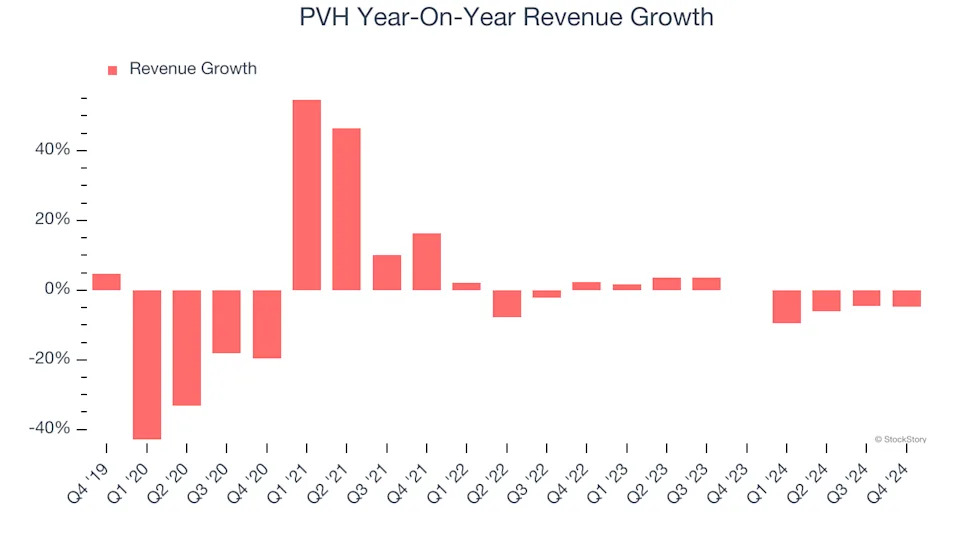
We can dig further into the company’s sales dynamics by analyzing its constant currency revenue, which excludes currency movements that are outside their control and not indicative of demand. Over the last two years, its constant currency sales averaged 2% year-on-year declines. Because this number aligns with its normal revenue growth, we can see that PVH has properly hedged its foreign currency exposure.
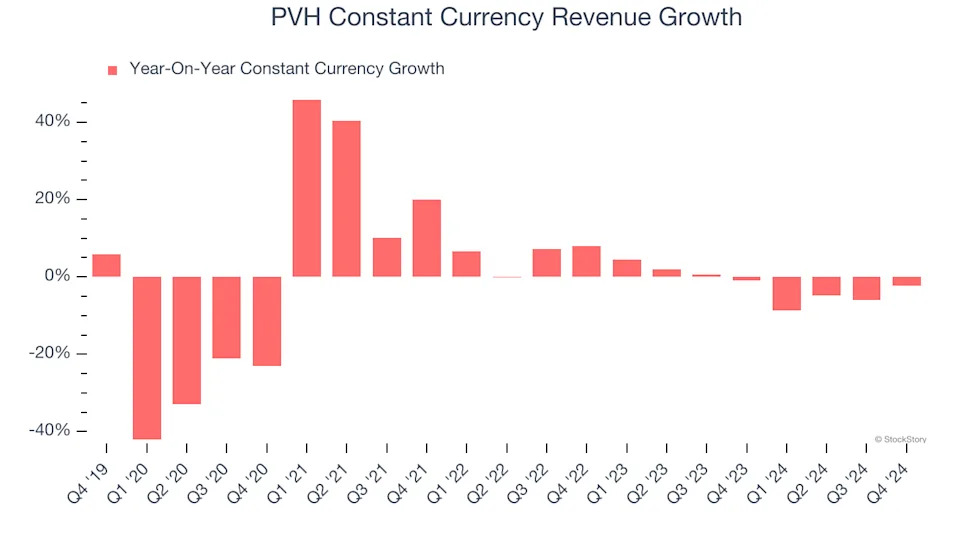
This quarter, PVH’s revenue fell by 4.8% year on year to $2.37 billion but beat Wall Street’s estimates by 1.5%.
Looking ahead, sell-side analysts expect revenue to remain flat over the next 12 months. Although this projection suggests its newer products and services will catalyze better top-line performance, it is still below average for the sector.
Today’s young investors likely haven’t read the timeless lessons in Gorilla Game: Picking Winners In High Technology because it was written more than 20 years ago when Microsoft and Apple were first establishing their supremacy. But if we apply the same principles, then enterprise software stocks leveraging their own generative AI capabilities may well be the Gorillas of the future. So, in that spirit, we are excited to present our Special Free Report on a profitable, fast-growing enterprise software stock that is already riding the automation wave and looking to catch the generative AI next .
Operating Margin
PVH’s operating margin has been trending down over the last 12 months and averaged 9.5% over the last two years. The company’s profitability was mediocre for a consumer discretionary business and shows it couldn’t pass its higher operating expenses onto its customers.
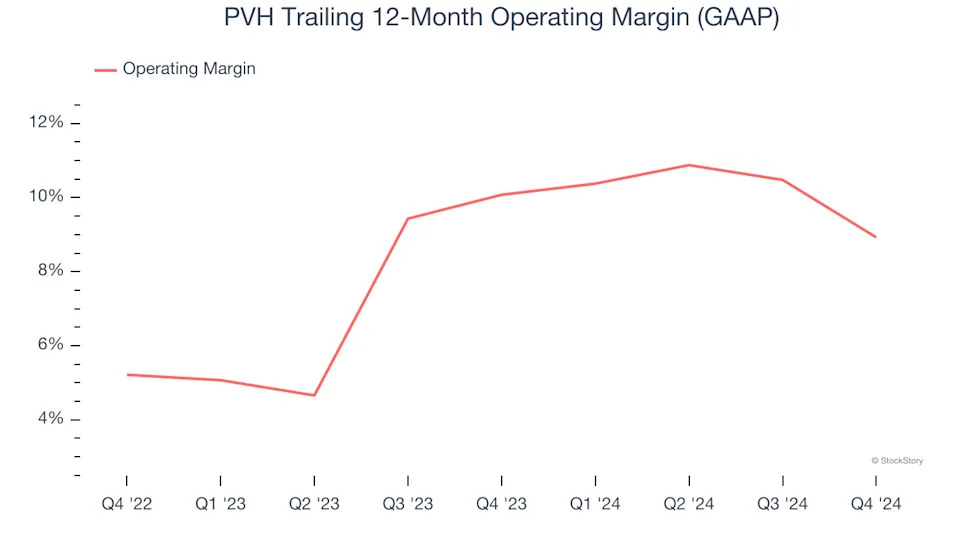
This quarter, PVH generated an operating profit margin of 8.9%, down 5.5 percentage points year on year. This contraction shows it was less efficient because its expenses increased relative to its revenue.
Earnings Per Share
Revenue trends explain a company’s historical growth, but the long-term change in earnings per share (EPS) points to the profitability of that growth – for example, a company could inflate its sales through excessive spending on advertising and promotions.
PVH’s EPS grew at an unimpressive 4.3% compounded annual growth rate over the last five years. On the bright side, this performance was better than its 2.7% annualized revenue declines and tells us management adapted its cost structure in response to a challenging demand environment.
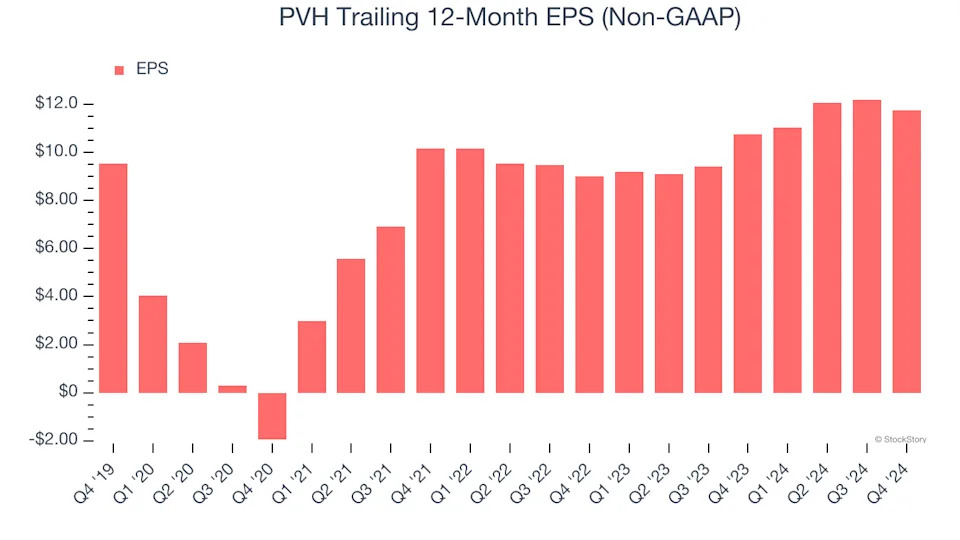
In Q4, PVH reported EPS at $3.27, down from $3.72 in the same quarter last year. Despite falling year on year, this print beat analysts’ estimates by 1.8%. Over the next 12 months, Wall Street expects PVH’s full-year EPS of $11.76 to shrink by 3.1%.
Key Takeaways from PVH’s Q4 Results
It was great to see PVH’s full-year EPS guidance top analysts’ expectations. We were also glad its constant currency revenue and EPS outperformed Wall Street’s estimates. Overall, this quarter had some key positives. The stock traded up 11.1% to $71.96 immediately following the results.
Indeed, PVH had a rock-solid quarterly earnings result, but is this stock a good investment here? When making that decision, it’s important to consider its valuation, business qualities, as well as what has happened in the latest quarter. We cover that in our actionable full research report which you can read here, it’s free .

